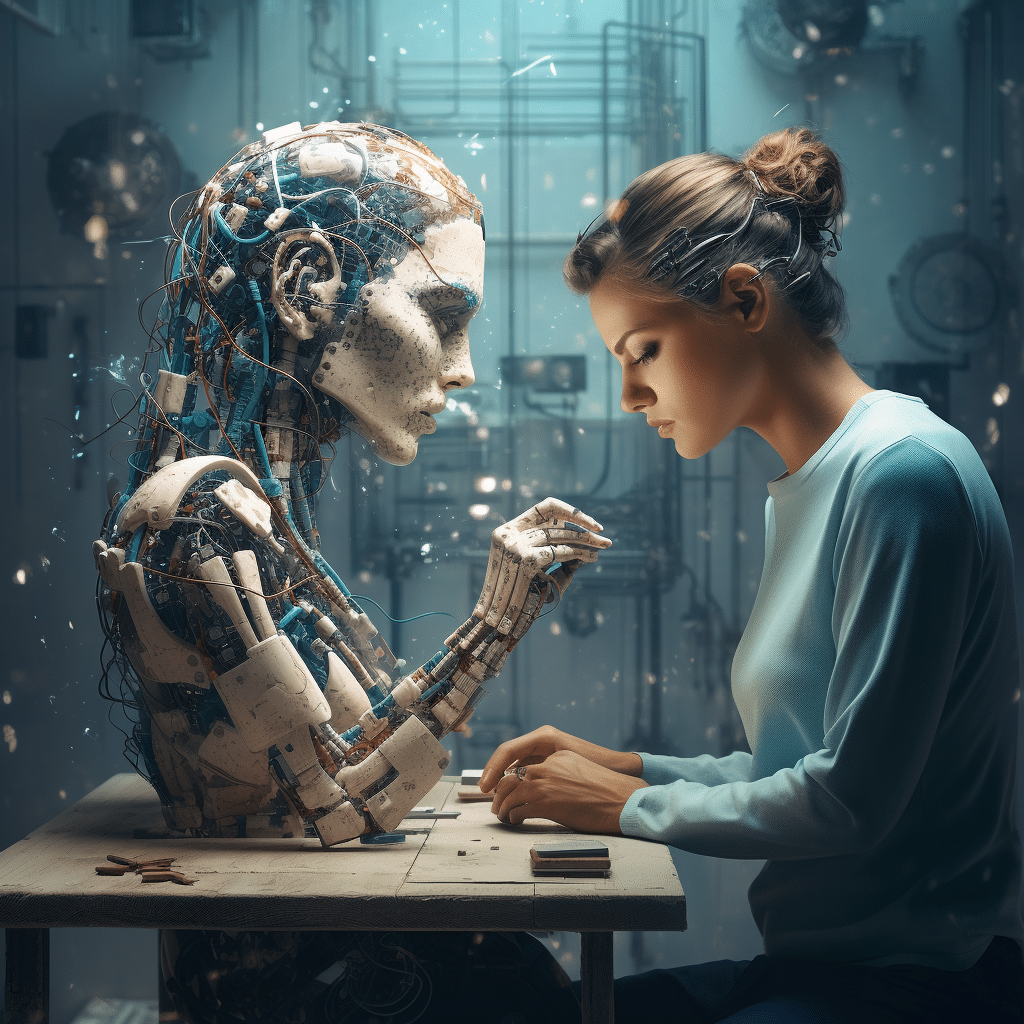
The Evolution of Human-AI Collaboration in the Workplace
Artificial Intelligence (AI) has rapidly transformed various aspects of our lives, and the workplace is no exception. The collaboration between humans and AI systems is evolving at an impressive pace, revolutionizing the way we work and boosting productivity across industries. This article explores the remarkable journey of Human-AI collaboration in the modern workplace.

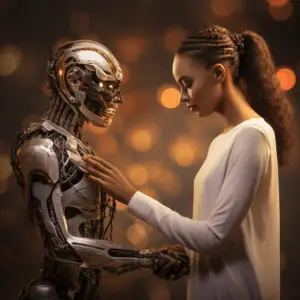
The Rise of AI Assistance
Initially, AI was seen as a threat that could potentially replace human jobs. However, as technology progressed, its potential as a powerful tool for assisting humans became evident. AI-powered virtual assistants, chatbots, and automation tools have become omnipresent, providing support for various tasks such as customer service, data analysis, and routine administrative work. The ability of AI systems to process vast amounts of data with speed and accuracy significantly enhances human capabilities and frees up time for employees to focus on more complex and creative endeavors.
“AI will augment us. So, if we have computers that are good at finding patterns, humans can spend more time and mental effort on thinking about the implications of those patterns.” – Fei-Fei Li
The Emergence of Collaborative AI
As AI capabilities expand, we witness the emergence of collaborative AI systems that work alongside humans in a complementary manner. These systems have the capacity to learn and adapt from human input, providing a higher level of personalization and efficiency. For instance, in healthcare, AI-powered diagnostic tools can analyze medical images and provide accurate diagnoses, assisting doctors in making informed decisions. This collaboration between humans and AI leads to improved outcomes and enables accelerated problem-solving.
The Human-AI Symbiosis
The future of Human-AI collaboration lies in a symbiotic relationship, where humans and AI systems mutually benefit from each other’s strengths. While AI possesses computational power and data-driven insights, humans bring critical thinking, emotional intelligence, and ethical judgment to the table. Combining these strengths optimizes decision-making and problem-solving capabilities. Industries like finance, marketing, and scientific research already leverage the power of this synergy. The integration of AI into decision-making processes enhances accuracy, minimizes biases, and delivers more comprehensive results.
Challenges and Ethical Considerations
However, the integration of AI in the workplace presents certain challenges and ethical considerations. Data privacy and security, AI bias, and transparency are critical issues that need to be addressed. Safeguarding personal data and ensuring AI systems are fair and transparent are vital steps towards building trust between humans and AI.
“AI should never be human-like. It can do computations humans can’t – but display what it does in ways humans can understand.” – Timnit Gebru
The Future is Collaborative
The evolution of Human-AI collaboration is an exciting journey with limitless potential. As AI technology continues to advance, we will witness more seamless integration, allowing humans and AI systems to work hand in hand towards shared goals. The workplace of the future will rely on effective collaboration between humans and AI, paving the way for increased productivity, innovation, and transformative growth.
So, embrace the evolution, adapt to the possibilities, and prepare for a future where collaborations between humans and AI become integral to success in the workplace.
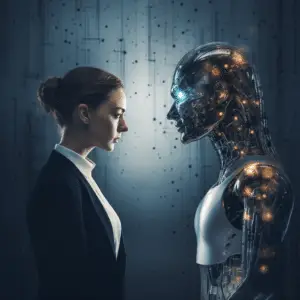
What are some examples of successful Human-AI collaboration models that have transformed industries and improved work efficiency?
There are several examples of successful Human-AI collaboration models that have transformed industries and improved work efficiency. Some notable examples include:
1. Healthcare: IBM Watson’s collaboration with medical professionals has helped improve patient diagnoses by providing AI-powered assistance in analyzing medical records and suggesting treatment options.
2. Manufacturing: Companies like Siemens and General Electric have implemented AI-powered systems that work alongside human workers to optimize production processes, detect equipment failures, and improve overall operational efficiency.
3. Financial Services: Chatbots and virtual assistants, powered by AI, have been deployed by many banks and financial institutions to provide customers with personalized support, improve customer service, and automate routine tasks like account inquiries or transaction processing.
4. Transportation: Companies like Uber and Lyft have successfully transformed the ride-sharing industry by using AI algorithms to match drivers and passengers, optimize routes, and predict demand. This has significantly enhanced efficiency and reduced wait times for passengers.
5. Customer Service: Many organizations have adopted AI-powered chatbots and virtual assistants to handle customer inquiries, provide real-time support, and automate customer service processes. This has improved response times, reduced costs, and enhanced overall customer experience.
6. Education: AI-powered platforms and tools have been developed to assist teachers in providing personalized learning experiences, grading assessments, and identifying areas where students need additional support. This collaboration has led to improved educational outcomes and greater efficiency in the classroom.
Overall, these examples demonstrate the potential of Human-AI collaboration models in transforming industries, enhancing productivity, and improving work efficiency across various sectors.
What are the potential benefits and challenges associated with the increasing integration of AI and automation in the workplace, and how can organizations effectively navigate these changes for productive collaboration
The increasing integration of AI and automation in the workplace offers several potential benefits, but organizations also face challenges in effectively navigating these changes for productive collaboration.
Benefits:
1. Increased efficiency: AI and automation can streamline repetitive and mundane tasks, allowing employees to focus on higher-value work. This can lead to increased productivity and efficiency in the workplace.
2. Enhanced accuracy: AI systems can process large amounts of data quickly and accurately, reducing the chances of human error. This can improve the quality and reliability of work outputs.
3. Cost savings: Automation can reduce labor costs by replacing manual tasks with technology, leading to potential cost savings for organizations.
4. Improved decision-making: AI-based analytics tools can process vast amounts of data and generate insights that aid in decision-making processes, leading to more informed and data-driven decisions.
Challenges:
1. Job displacement: The integration of AI and automation may result in some jobs being replaced by machines. Organizations need to carefully manage the transition to ensure employees are reskilled or redeployed to other roles.
2. Ethical concerns: The use of AI raises ethical questions around privacy, bias, and transparency. Organizations must navigate these concerns and ensure AI systems are designed and used ethically.
3. Resistance to change: Employees may resist the adoption of AI and automation due to fear of job loss or lack of comfort with new technologies. Organizations must address these concerns through effective change management strategies.
4. Skills gap: The implementation of AI and automation requires a workforce with the necessary skills to design, develop, and operate these technologies. Organizations need to invest in upskilling and reskilling initiatives to bridge the skills gap.
Navigating changes for productive collaboration:
1. Communication and transparency: Organizations must communicate openly and transparently about the goals, benefits, and challenges associated with AI and automation. This fosters trust among employees and helps them understand the changes taking place.
2. Employee involvement and support: Involve employees in the decision-making processes, seek their input, and provide support and training to help them adapt to new technologies. This empowers employees and promotes collaboration.
3. Redesigning roles: Instead of replacing jobs entirely, organizations can focus on redesigning roles to incorporate AI and automation. This entails identifying tasks that can be automated and ensuring employees are upskilled to work alongside these technologies.
4. Continuous learning and development: Establish a culture of continuous learning and development to ensure employees have the necessary skills to collaborate effectively with AI and automation. This can be achieved through training programs, workshops, and mentorship opportunities.
Overall, organizations can effectively navigate the increasing integration of AI and automation in the workplace by fostering a culture of collaboration, involving employees, addressing concerns, and providing the necessary support and skills development.
How has the introduction of Artificial Intelligence (AI) impacted the traditional concept of human-machine collaboration in the workplace?
The introduction of Artificial Intelligence (AI) has significantly impacted the traditional concept of human-machine collaboration in the workplace. AI systems, such as chatbots, virtual assistants, and automated algorithms, have emerged as valuable tools for enhancing efficiency, productivity, and decision-making processes. Here are some ways AI has influenced human-machine collaboration:
1. Automation of routine tasks: AI can automate repetitive and mundane tasks, allowing humans to focus on more complex and strategic activities. This collaboration minimizes human error, saves time, and boosts productivity.
2. Enhanced decision-making: AI systems can process vast amounts of data and provide valuable insights for human decision-makers. Human-machine collaboration helps to leverage these insights and make more informed and accurate decisions.
3. Intelligent assistance: Virtual assistants like Siri, Alexa, or Google Assistant provide immediate responses and assist with various tasks, such as scheduling appointments, searching for information, or setting reminders. This collaboration between humans and AI enhances efficiency and augments human capabilities.
4. Augmented creativity: AI systems can analyze vast amounts of data, identify patterns, and generate innovative ideas. This collaboration unleashes human creativity by providing inspiration and ideas that were previously unexplored.
5. Improved customer service: AI-powered chatbots can handle customer queries and provide real-time assistance, significantly improving customer service. By collaborating with humans, these chatbots can escalate complex issues to human agents, resulting in faster and more efficient problem-solving.
6. Intelligent data analysis: AI algorithms can analyze large datasets and identify trends, patterns, and anomalies that may not be apparent to humans. Human-machine collaboration enables organizations to gain deeper insights from their data, leading to better decision-making and improved business outcomes.
7. Skill development and redefinition: As AI technology evolves, the traditional concept of work is being redefined. Collaboration between humans and AI requires individuals to develop new skills such as problem-solving, critical thinking, and adaptability to work effectively alongside AI systems.
In summary, the introduction of AI has transformed the traditional concept of human-machine collaboration in the workplace. Rather than replacing humans, AI systems have become valuable partners, augmenting human capabilities, improving efficiency, and driving innovation. This collaboration opens up new possibilities and empowers organizations to achieve higher levels of productivity and success.

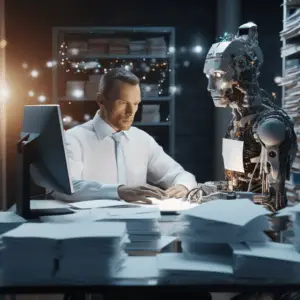
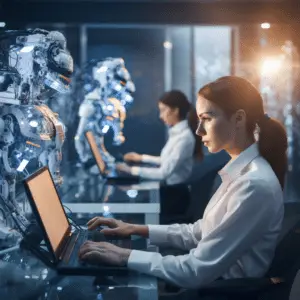






Your article helped me a lot, is there any more related content? Thanks!
I like this web site it’s a master piece! Glad I found this ohttps://69v.topn google.Raise range